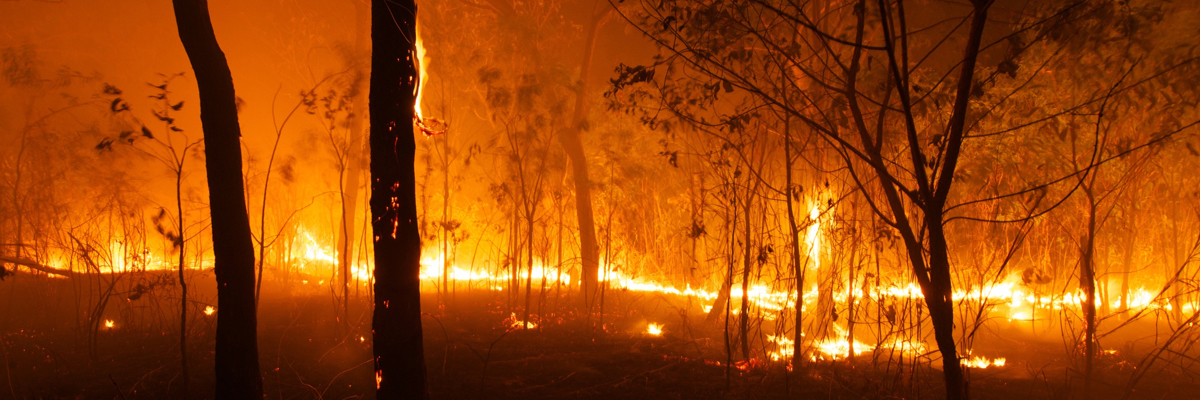Guarding Your Home: The Vital Duty of a BAL Report in Bushfire Readiness
Guarding Your Home: The Vital Duty of a BAL Report in Bushfire Readiness
Blog Article
Exactly How BAL Record Impacts Shrub Fire Defense Procedures
In the world of bush fire defense, the Building Assault Level (BAL) report stands as an essential tool that substantially affects the safety and security and durability of properties in fire-prone areas - BAL Report. The influence of a BAL evaluation prolongs far beyond simple documents; it functions as the foundation for determining the appropriate building requirements and fire protection actions necessary to mitigate the dangers positioned by bushfires. As areas come to grips with significantly extreme fire periods, understanding just how the BAL report forms these safety steps becomes critical for home owners, policymakers, and building contractors alike
Understanding the Bushfire Assault Degree

Significance of BAL Report Evaluation
Furthermore, the BAL report analysis functions as a foundational step in complying with legal obligations and requirements connected to bushfire defense. Local councils and authorities usually mandate the submission of a BAL report as part of the preparation and building authorization process to make sure that buildings are properly safeguarded against bushfire threats. Falling short to perform a thorough BAL record evaluation can cause poor security measures, leaving residential or commercial properties prone to ravaging bushfire occurrences.
Construction Specifications Based Upon BAL
A comprehensive understanding of the Bushfire Strike Level (BAL) enables homeowner to implement building criteria tailored to their particular danger account. Construction criteria based on BAL are important in mitigating the impact of bushfires on buildings. The BAL score categorizes the potential danger a building faces during a bushfire on a range from BAL-Low to BAL-FZ (Flame Zone) Each BAL level corresponds to particular building and construction requirements outlined in the Australian Standard AS3959-2018 Building of Buildings in Bushfire-Prone Areas. Buildings classified as BAL-Low may just require basic actions such as removing particles and maintaining gardens, while those in greater BAL classifications need more durable measures like ember screens, fireproof products, and secured windows. Adhering to these building and construction criteria not only boosts the architectural strength of the property however likewise enhances the overall safety of locals throughout a bushfire event. Residential property proprietors need to thoroughly consider their BAL rating and comply with the matching building requirements to adequately protect their residents and homes.
Carrying Out Fire Defense Actions
With the foundation of building and construction criteria based on Bushfire Attack Level (BAL) in place, the focus currently moves towards the sensible implementation of fire defense procedures to fortify residential properties against bushfire threats. Passive actions consist of making use of fire-resistant building products, mounting cinder guards on vents, securing voids in wall surfaces and roof coverings, and preserving go to the website a clear space around the home free from flammable plants. By integrating both passive and energetic approaches, residential properties can significantly reduce their vulnerability to bushfire events and boost the safety of residents.
Shielding Houses Versus Bushfires
Efficiently guarding homes against the damaging effects of bushfires needs a detailed and aggressive approach to fire defense steps. Home owners living in bushfire-prone locations must focus on the application of different methods to enhance their residential or commercial property's strength versus wildfires. One basic facet is next page producing a defensible area around the home by preserving a clear area totally free of flammable products. This includes routinely trimming vegetation, getting rid of dead plants, and making sure a risk-free distance in between trees and frameworks. Setting up fire-resistant roof covering products can likewise substantially lower the risk of cinder strikes and direct flame contact. Additionally, securing voids and vents to prevent coal intrusion, along with incorporating fire-resistant doors and home windows, can assist strengthen the home's defense versus bushfires. Buying a trusted water source, such as a well-maintained lawn sprinkler or a committed water tank, is essential for supplying water throughout fire emergencies - BAL Report. By welcoming an aggressive stance and integrating these protective steps, home owners can substantially enhance their opportunities of securing their homes against bushfires.
Conclusion
Finally, the Bushfire Assault Degree (BAL) record plays a vital function in identifying the necessary protection actions against bushfires. By evaluating the BAL, building criteria can be tailored to reduce the threats and ensure the safety and security of homes in fire-prone areas. Implementing fire defense steps based on the BAL report is crucial in safeguarding homes from prospective bushfire risks. It is vital for home owners to prioritize BAL assessments and adhere to recommended construction criteria to enhance bushfire resilience.
In analyzing bushfire danger to residential or commercial properties, recognizing the Bushfire Assault Degree (BAL) is a crucial element for implementing reliable defense actions. On the whole, a clear understanding of the Bushfire Assault Level is important for applying appropriate security actions and mitigating the impact of bushfires on buildings.

Report this page